Bernard L. Feringa
Biographical
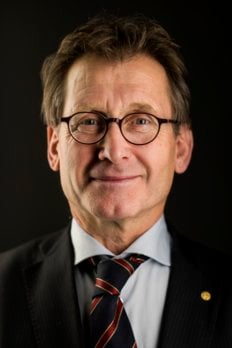
It is a great privilege to be able to stand on the shoulders of the giants of chemistry and in doing so experience the marvels of the molecular world and provide “challenges for our youth, dreams for the people, and opportunities for industry.” For me being a scientist engaged in designing new molecules and chemical systems is a life-long “adventure into the unknown,” entering an uncharted territory of astonishing beauty, surprises and amazing perspectives. Over the past decades on many occasions we have lost track on our intended journeys, reaching places in chemical space we could never have imagined. On these occasions, one of my heroes, Abel Tasman, comes to mind. Several hundred years ago, Tasman, an adventurer, departed from a small village close to where we live, sailed in a primitive wooden ship to the edge of the known world, lost his bearings and as a consequence made the serendipitous discovery of what we now call Tasmania and New Zealand. From the outset of my academic studies as a young adult I ventured on an unexpected odyssey into chiral space, however my fascination for the unknown, for “exploring beyond the border,” began in my childhood.
The early days
In 1866, my grandfather, then 3 years old, moved with his family, poor Roman Catholic buckwheat farmers from Emsland, a few miles across the German-Dutch border, to settle in the great Bourtanger moor; a vast, largely uninhabited and remote area in the northeastern part of the Netherlands. The two main reasons for these “Siedler” to build a living in this desolate area were a lack of fertile soil and the threat of conscription into the Prussian army. It was in that same year that the Kingdom of Hanover was dissolved. They were among the founding families of the village of Barger-Compascuum. Starting in primitive turf houses, they slowly established themselves by farming and digging peat. The rather harsh living conditions imbued the family with a strong work ethic, being independent and self-supportive and with a strong desire for knowledge, which we also experienced in our childhood. My father Geert Feringa, who was the youngest of the family of ten, ran the farm while being involved in village community organizations including the local bank, school and church councils. The family of my mother Elizabeth Hake has a similar background, also originating from the border region. Facing poverty, the whole family of her ancestors decided to emigrate to the USA in the 1800s except for the youngest son, who became the first headmaster of the elementary school in Hebelemeer, a German village close to where we lived. Her parents also moved across the border, reclaiming land, and my mother grew up at their farm as the eldest of a family of ten.
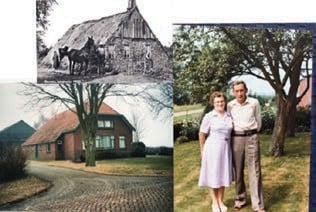
My parents married in 1949 and I was born in 1951 as the second of ten children. I cannot remember that I ever left the village during my early youth; most of the first 10 years I spent within 800 meters of the border (except while attending school). The farm and the vast wilderness just behind our fields being my world and that of my brothers and sisters as well as the dozens of nephews and nieces that formed our community. This playground definitively stimulated my imagination, sense of teamwork and desire to explore. Crossing the border behind our farm was always a hard-to-resist adventure and the wilderness on the other side provided many unexpected engagements and findings. Our family was largely self-supporting with animals for milk, eggs and meat, peat for heating, a water well, and a large garden for vegetables and fruit, the latter being my mother’s pride and joy. There were no luxuries but we were comfortable and to this day, I am amazed at how she managed to feed all ten of us with an abundance of healthy food even throughout the winter. From an early age, each of us had our own tasks, and as I grew, I tended the chickens, helped in the garden and later would cut peat for the stove. Observing the behavior of animals, growing three-meter-tall sunflowers and questioning the origin of peat without doubt stimulated greatly my inexorable desire for knowledge.
Basic and high school education
I am extremely grateful to my elementary school teachers, who provided us with a solid primary education. My life long appreciation of history and geography started with their accounts while covering these topics, which was further stimulated by the fascinating stories told by my father and uncles during long-winter evening gatherings at the farm. Being asked frequently why “playing with molecules is so much fun,” the proper answer is perhaps that I am striving to fill the gap in my early education left by fact that I did not attend a kindergarten. Both of my parents had little more than elementary school education but they were nevertheless top of their classes and on the occasions that I failed to deliver the proper answer to the headmaster, he would remind me that my mother would have known the answer. Our parents were certainly role models for learning and encouraged us to seize opportunities absent to them in a remote farmer’s community in the pre-war period. It may be hard to imagine today but we should remember that there were no TVs, PCs or smartphones; but there were certainly books at home or in the local church library that we could reach for in our search for knowledge.
The next step in my education was to attend the Katholiek Drents College, a secondary education called the HBS, which was held in high esteem in the Netherlands. I had the good fortune to attend a rather small school with a team of excellent academically trained young teachers covering a wide range of topics. Confronted with biology, mathematics, physics, and chemistry, a new world opened for me fueling my thirst to know how and why. I remember vividly that most of our teachers could address topics beyond the textbook and put the material we had to learn in a broader context.
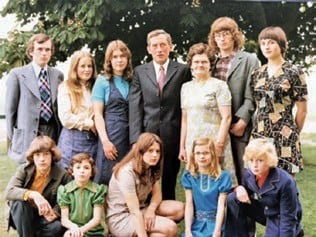
Our chemistry teacher, Op de Weegh, was an exceptional inspiration, always eager to challenge us. In the later part of my high school education, when the next step in academic education was approaching, he was particularly influential in my decision to do chemistry. Although mathematics was my most successful subject, the fact that in chemistry you could experience color, odor or beautiful crystals and see practicality ranging from fertilizer to drugs were decisive factors. At a recent reunion of my high school, talking to my chemistry teacher reminded me of one of his sayings: “I wish every child in his or her life at least one excellent teacher.” I had the good fortune to have several! Cycling 15 km every day to school with my friends – there was no public transport – also gave room for intense debates, sharpening our minds. This was also the time that I started to play for the local soccer team, and although I was a player of modest talent, and digressed for a few years playing handball, I have enjoyed playing soccer for a long period extending well into my academic career. Perhaps the best gift of my high school education was that I learned to appreciate many disciplines.
A perhaps unexpected influence during my late high school and early university studies, that wild period of the student revolts and social upheaval, were the endless discussions at home among my brothers and sisters. Our Sunday debates on topics ranging from world politics to inventions, religion, and human behavior are still vividly remembered by all of us. Let me not conclude describing this period without mentioning perhaps the single most influential person. I always bore the desire to become a farmer but had the good sense to follow my father’s wise advice to study first and only later, perhaps, reconsider my options.
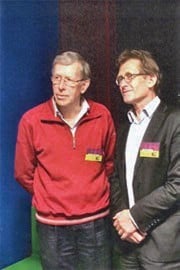
As a consequence, I spent most of the long summer holidays during high school and university working alongside my father on the farm. He shared with me the fascination and admiration for the natural world, the wonder of ears of wheat growing from a tiny seed, the beautiful colors of the flowers in the fields, and cows giving birth to their offspring. Such wonder alleviated the muscle ache that followed the solid day’s work and while we were puzzled by the shape of clouds or the flow of water, and as we struggled with the nature of gravity, it invariably guided us back to our work with the soil.
University education
I entered the University of Groningen as a major in chemistry in 1969 and I quickly learned to appreciate the academic environment, the various aspects of student life and the many hours of demanding courses and lab work. Two factors I consider of major importance for this period of my undergraduate education. First, we were the first cohort of students to work in our then brand-new laboratories; we take pride in being a part of that community. Second, several of our professors were either US citizens or trained in the USA and they challenged us – we felt their sense of expectation. They had modelled the chemistry department after top US institutes and their rather unique spirit did not go unnoticed. My real love for synthetic chemistry started in my third year when I had my first opportunity to work on a short research topic. I hold fondly the memory of the exhilaration that I felt making my first new compound – a compound never prepared anywhere in the world. My next experience of research was a period in the inorganic department, where I learned to handle the most air and moisture sensitive early transition organometallic reagents, in particular organotitanium compounds. Every time I see a nice painted wall the vivid memory of a leaking seal of the Schlenk flask, with oxygen slowly creeping in, springs to mind.
My decision to carry out my Masters research, I think, says a lot about my character then. I had declined a project proposal from a chemistry professor who had indicated that prior to working on that topic I should do a lot of routine measurements, as “the problem was too difficult for me.” I was eager to be challenged and was fortunate that another professor, Hans Wijnberg, struck the right cord by providing a topic that had no prior art whatsoever. Asymmetric coupling of phenols; how to couple two radicals generating axial chirality, as in BINOL? I started exploring Fe-analogs of chiral camphor-based -diketonate ligands, reported in 1974 by George Whitesides for his chiral europium NMR shift reagents. Although during my Masters research I failed to accomplish the asymmetric coupling of 2-naphthol, it was rewarding that ultimately during my PhD studies I was able to realize BINOL formation with 16% optical purity using a chiral copper amine complex as oxidant. These were the years that I became fascinated by stereochemistry, not least by the excitement that arose in the field as a result of many amazing discoveries in asymmetric catalysis. The general interest in the group on fundamental aspects of stereochemistry ranging from ORD and CD spectroscopy, absolute configuration and absolute asymmetric synthesis to enantiomers lacking optical activity and the pioneering work on asymmetric organocatalysis using cinchona alkaloids was a fertile learning environment. It was also important that numerous prominent (stereo-) chemists – among them Sharpless, Eliel, Barton, Turro and Kagan – visited Groningen during that period and we were strongly encouraged to discuss with these great scientists. I continued my PhD studies in the Wijnberg group and discovered among others small differences in selectivity between a racemic mixture and pure enantiomers in stoichiometric reactions. We named this phenomenon the antipodal effect and, although our initial submission met with disbelief from the referees, ultimately our work was published. Much to our delight, 10 years later, Henri Kagan demonstrated that related phenomena occur in catalytic reactions and formed the basis for the now widely accepted non-linear effects.
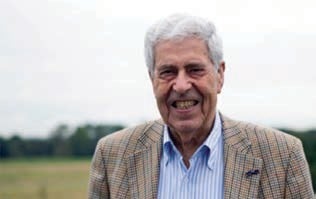
Perhaps the most decisive moment in regard to my later career was the design of chiral overcrowded alkenes that did not bear a stereogenic center but for which both the cis and trans stereoisomers consisted of enantiomeric pairs. The idea was rather simple; if a biaryl can be chiral due to hindered rotation around a single bond, the question arose “can an olefin form a stable homochiral compound exclusively due to torsion around the double bond”? Taking advantage of then newly discovered McMurry coupling of ketones, the chiral overcrowded alkenes were indeed prepared and reported in JACS 1976. How could I have realized at that moment that this discovery would later form the basis for our chiroptical molecular switches and our unidirectional rotary motors. In retrospect, the PhD period provided me with the essential atmosphere for discovery in which we were encouraged to question conventions and break paradigms. My fellow students, in particular Bert (EW) Meijer, Kees Hummelen and Henk Hiemstra, who have each made prominent academic careers over the past decades, greatly added to the stimulating and challenging atmosphere in the group. The summer of 1977 was another highly important period in my career, when I was dispatched to the US to attend the Organic Symposium in Morgantown, WA. Hans Wijnberg introduced me to many distinguished chemists but I was most impressed by the superb 2 h 20 min (a rather short lecture I was informed) evening lecture by the great Prof. R. B. Woodward. As my mentor had also arranged for me to make a short lecture tour, I had the privilege to give presentations about my PhD work at Penn State and Cornell among others and Princeton where I also had the opportunity to discuss stereochemistry with my hero Kurt Mislow. After my American journey, I was convinced that my next step was postdoctoral research in the US. But as is so often the case in life our journeys can take unexpected detours.
The Shell period
In the months writing up my thesis work I realized that national service, then compulsory in the Netherlands, would inevitably quench any dreams of a postdoctoral adventure. By good fortune, I was offered a position at the Royal Dutch Shell Research Laboratories (KSLA) in Amsterdam that, because of my expertise in stereochemistry, exempted me from active military service and provided the next best thing to a Postdoc period in the US; as a young academic, I was entering a highly prestigious corporate research institute, comparable to Bell Labs or DuPont central research, with a worldwide reputation in catalysis. Indeed, I experienced an amazing exposure to both fundamental and applied catalysis research during my 6.5 years at Shell. Most of my own research focused then on catalytic oxidations and novel ligand and catalyst design. In my first months, I shared an office with David Reinhoudt, who introduced me to the then rapidly emerging field of supramolecular chemistry. Although I was working on fundamental problems in catalysis, for instance photo-redox catalysis, I strongly benefitted from the interaction with process chemists also. The exposure to numerous industrially relevant projects provided me with important insights that have helped to shape my future collaborative research projects, as well as in teaching our students, the majority of whom would enter industrial careers. Definitively, my later projects on asymmetric catalysis and phosphoramidites with DSM, catalytic oxidations with Unilever and liquid crystals with Philips over the past decades, were partly rooted in my industrial research period at Shell.
Apart from the KSLA period, I spent nearly 1.5 years at Shell Biosciences center in Sittingbourne, Kent, UK, working on herbicides. This period was equally fascinating, discussing with biochemists and plant physiologists among others. Immersion in total synthesis and chemical biology further stimulated my admiration for the power of synthetic chemistry to create and the unlimited opportunities presented by molecular design. Equally stimulating were regular meetings with Sir John Cornforth and members the British chemical community. Following my return to Shell Amsterdam and the catalysis group of Piet van Leeuwen, I realized that reading the latest discoveries in the prime chemistry journals still inspired me more than delving into industrial problems. When I was approached in 1984 by my Alma Mater to consider a junior faculty position in the chemistry department, theere was no hesitation. The fact that in that year I had married my wife Betty, who then lived in Groningen and was employed by the University Medical Center there, made the decision even easier.
University of Groningen
My research program over subsequent years was based firmly in synthetic organic and physical organic chemistry. Although it developed along two main lines, catalysis and molecular switches, stereochemistry remained the overarching theme. Exploring chiral space regularly provided fascinating surprises, be it a novel method to determine enantiomer excess without an external source of chirality, chiral amplification through sublimation, or DNA-based asymmetric catalysis (together with Gerard Roelfes).
Catalytic oxidation is key to many of the world’s most important industrial processes, and confronted with the challenge to design selective oxidation processes we focused on anti-Markovnikov Wacker oxidation and non-heme iron and manganese based catalytic systems. As part of these programs I enjoyed superb cooperation with Larry Que (Univ. Minnesota), Ronald Hage (Unilever/Catexel) and Wesley Browne (Univ. Groningen) over many years. Building my research team in the late 80s, I became intrigued by the lack of a highly enantioselective method for conjugate addition of organometallic (alkyl-zinc and copper) reagents. The introduction of chiral phosphoramidites as a novel privileged class of chiral ligands in asymmetric catalysis resulted ultimately (in 1996) in the 1,4-addition of organozinc reagents with synthetically useful enantioselectivities. From this period on, I had the privilege to work together on highly successful projects with my close colleagues Adri Minnaard and Suzy Harutyunyan, focusing on challenging total syntheses and equally challenging problems in asymmetric catalysis. It took another 8 years before we succeeded in taming Grignard reagents for similar conjugate additions and allylic substitutions; the key was to go deep and understand at a mechanistic level both the catalyst and the reaction as a whole. Spurred on by this success, finally, after 20 years of effort, we were able to achieve catalytic asymmetric C-C bond formation with the notoriously reactive organolithum reagents. Controlling aggregation behavior and applying well defined copper complexes provided the long-awaited solution. This was the stepping stone for our current program on ultrafast organolithium cross coupling.
I was appointed as full professor in 1987, succeeding my scientific father Hans Wijnberg in 1988, and gave my inaugural public lecture at the University of Groningen (the academic oratie is a fine Dutch tradition) in 1989 entitled “Order and Dynamics in Synthesis.” The discussion on that occasion among others centered on “intelligent molecules”; I pondered on how far we could go in building functional molecules that were designed to perform specific tasks, ultimately creating tiny molecular robots.
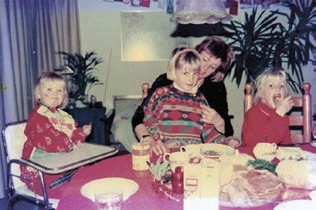
This event was the starting point for over 25 years of work on molecular switches and motors. The basic idea was to design molecular information storage materials taking advantage of the dormant overcrowded alkene switches from my PhD period. The excellent switching properties (photo-bistability) and inherent chirality (for non-destructive read-out) were decisive factors that enabled the birth of an entire class of chiroptical molecular switches. The merging of synthesis with mechanistic studies, photochemistry, materials chemistry and spectroscopy, in close cooperation with Wesley Browne, attracted students with distinct training and expertise who beyond doubt were highly influential in our discussions and approaches taken during the next two decades. An important collaboration on the absolute configuration of chiral overcrowded alkenes was started with Noboyuki Harada in Sendai. We extended our program on photoswitches to control biosystems such as MsCl protein channels and SecY protein transporters (with biochemist Armagan Kocer and molecular microbiologist Arnold Driessen, respectively). As our research slowly evolved from molecules into dynamic molecular systems we worked on control of organization along different length scales, i.e. gels, polymers and liquid crystals. The studies on chiroptical switches culminated in the discovery of our light-driven unidirectional rotary motor, reported in 1999. This was also the starting point for the design of several generations of motors, surface anchored rotary motors and motorbased liquid crystals (in cooperation with Dick Broer, then at Philips Research). Being a member of both the Stratingh Institute for Chemistry and the Zernike Institute for Advanced Materials at the University of Groningen was a major advantage, providing access to a wide range of facilities (in particular for surface characterization) and highly beneficial to my students working on these multifaceted problems. The Spinoza grant was the immediate reason for the design of a four-wheel drive molecular car tackling the fundamental challenge of how to convert rotary molecular motion into translational motion across a surface. After 7 years we succeeded, in close cooperation with Kalle Ernst at EMPA, Zurich. These were fascinating years for my “motor team” as we designed single motors that could move in both directions, motors powered by visible light, multitasking chiral catalyst and self-assembled nanostructures based on rotary motors among others. In hindsight, probably the most memorable event in all these years was the direct observation by the naked eye of a micro-object rotating, while floating on a soft liquid crystal surface, by a light-driven motor.
I had the pleasure to spend a major part of my life at the University of Groningen’s Chemistry Department with fine colleagues and an open border-free atmosphere encouraging students to cooperate and staff to discuss and work together. I enjoyed working with my group on diverse chemical problems stimulating creativity and cooperation with ample opportunities to learn and explore beyond our comfort zone. It was indeed a privilege to join my highly talented students on a fascinating journey into the largely uncharted territory of molecular motors and machines.
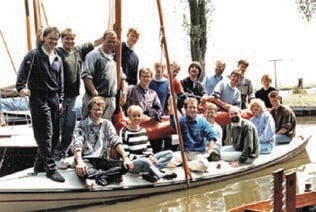
The long tradition of spending a week each year with my whole group abroad, visiting industry and another university or research institute, is highly valued. This “workweek” with student-organized lectures ranging from industrial innovation, ethics, chemical warfare to molecular cooking, joint symposia and sports and pub events greatly stimulated a fine team spirit.
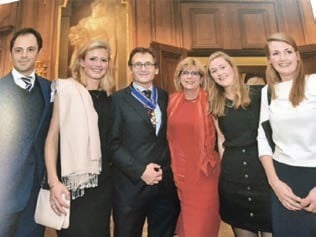
Shortly after my appointment in Groningen, Betty and I decided to move to the village of Paterswolde just south of Groningen, giving us both the chance to enjoy a decent daily cycle to and from our respective workplaces. “Moving in Flatland” in the northern Netherlands of course gives plenty of time each day to think about the three-dimensional puzzles that we were facing in the lab. Just as memorable have been the annual BBQ’s in our garden when the whole group gathers together (often during European and World Cup Soccer events) and the many PhD graduations, for which we have the tradition of making a movie about the candidates’ time to ensure that their many unexpected talents in and out of the lab are remembered.
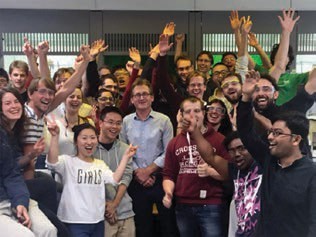
I enjoy long-distance skating, and as a farmer’s son it is a delight to have our own piece of land with a meadow, horse and vegetable garden which allows me not only to exercise in the weekends but never lose contact with nature. Our three daughters shared the enthusiasm for learning and sports. Femke, a cell biologist, is in the final year of her PhD studies at the Netherlands Cancer Institute (NKI), Hannah just started a PhD in the area of food allergies at the Utrecht University Medical Center and Emma is a Masters student in movement sciences at the Free University of Amsterdam. The week of skiing in the Swiss Alps every winter and the sailing events on the Frisian lakes each summer provide ample opportunity for challenges beyond chemistry and are very precious moments with Betty and the children. I am extremely happy to have experienced great support during my entire career from my family and that they tolerate me being distracted by “crazy molecules” at unexpected moments. Betty always reminds us of my passion: “Being a scientist is a way of life.” I could not agree more, and I am grateful that she was and is always alongside me on our journey.
This autobiography/biography was written at the time of the award and later published in the book series Les Prix Nobel/ Nobel Lectures/The Nobel Prizes. The information is sometimes updated with an addendum submitted by the Laureate.
Nobel Prizes and laureates
Six prizes were awarded for achievements that have conferred the greatest benefit to humankind. The 12 laureates' work and discoveries range from proteins' structures and machine learning to fighting for a world free of nuclear weapons.
See them all presented here.
